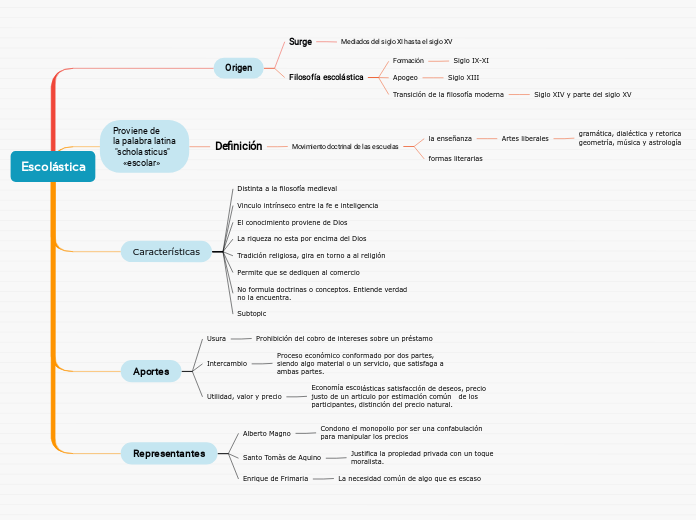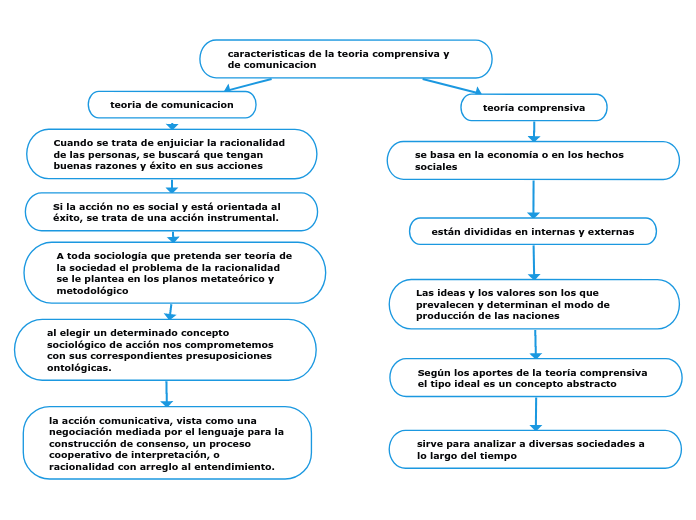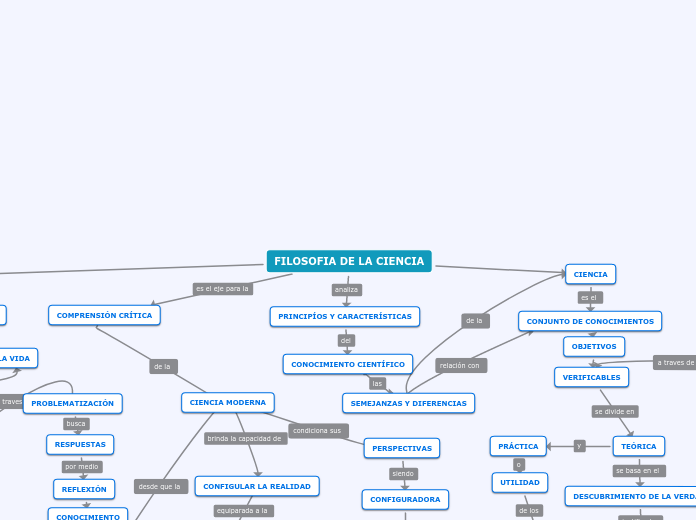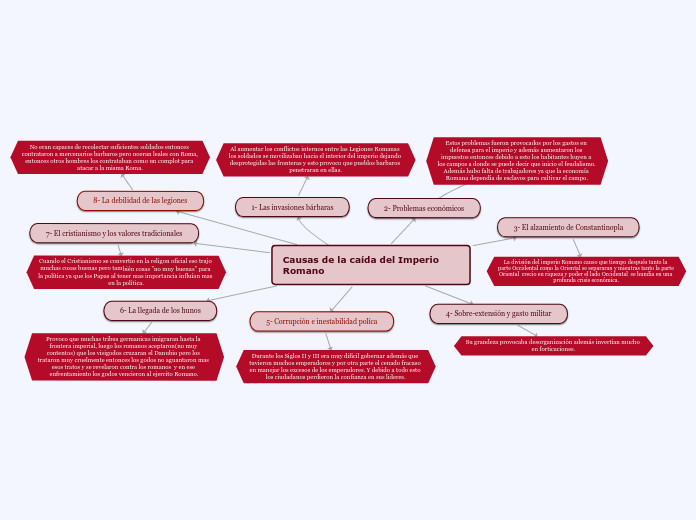Escolástica
To name your story, you have to think about the overall message and what you want your audience to understand from the story. Also, make it relevant and easy to remember.
Representantes
Enrique de Frimaria
La necesidad común de algo que es escaso
Santo Tomàs de Aquino
Justifica la propiedad privada con un toque moralista.
Alberto Magno
Condono el monopolio por ser una confabulación para manipular los precios
Aportes
Utilidad, valor y precio
Economía escolásticas satisfacción de deseos, precio justo de un articulo por estimación común de los participantes, distinción del precio natural.
Intercambio
Proceso económico conformado por dos partes, siendo algo material o un servicio, que satisfaga a ambas partes.
Usura
Prohibición del cobro de intereses sobre un préstamo
Características
Subtopic
No formula doctrinas o conceptos. Entiende verdad no la encuentra.
Permite que se dediquen al comercio
Tradición religiosa, gira en torno a al religión
La riqueza no esta por encima del Dios
El conocimiento proviene de Dios
Vinculo intrínseco entre la fe e inteligencia
Distinta a la filosofía medieval
Proviene de
la palabra latina
"scholasticus"
«escolar»
Definición
The ending of a story is essential. We all know that if the ending is weak, what happened before loses its importance. So make it unpredictable, but fair. A resolved ending answers all the questions and ties up any loose threads from the plot.
Movimiento doctrinal de las escuelas
This is the closure section of the story.
See examples of possible outcomes below:
- all problems have been solved
- it's clear how each one of your characters ends up
- your main character is transformed by the challenge
formas literarias
la enseñanza
Try answering these questions to come up with a closure:
- Have all the problems been solved?
- Is there a clear picture of what happens with each character in the story?
- Has the challenge transformed your main character?
- How do the characters feel in the end?
Artes liberales
gramática, dialéctica y retorica
geometría, música y astrología
Origen
In the beginning of the story (or the exposition), you will need to introduce the setting and characters. You might also want to introduce the main conflict. This part of the story is important because it gives the reader necessary background information and maybe even a first insight into a character’s personality.
Filosofía escolástica
The middle of the story is where you add layers of complications that will lead to the end. Reveal more about the character's journey. Did their personality go through changes? How did they overcome the challenges? And as you build up the story’s central conflict, make it more personal to that character. Also, from the middle act, you have to lead into the final act.
Transición de la filosofía moderna
There wouldn't be any tension and excitement in your story if there weren't any obstacles in your character's way.
Siglo XIV y parte del siglo XV
A story is nothing more than a character overcoming a series of difficulties to reach the desired goal. Obstacles usually create suspense and conflict. In overcoming obstacles, there is growth: weak becomes strong; hatred turns into love; sadness into happiness; wrong into right; lies into truth; or evil becomes good.
See a few examples below:
- stopping a meteor
- finding a killer
- finding love
Apogeo
Your character(s) need(s) motivation in order to solve the challenge(s).
Siglo XIII
Secondary characters might also have motives that lead them to cross paths with the main character or which might trigger them to help the main character.
Formación
Each story has a main character and that character usually needs to solve a problem or challenge. The character's challenge is the one that creates tension throughout the story.
Siglo IX-XI
In most stories, there are 3 challenges. The number 3 is a mystical number symbolizing completeness. Try to come up with interesting challenges with which your character needs to struggle.
See a few examples below:
- turns into a werewolf at night
- is sent back in time
Surge
Characters are essential to a good story. Usually, the protagonist(s) is/are the most affected by the plot. Introduce a character by focusing on their actions, interests, and occupation, as the physical appearance doesn't make a difference in most cases.
Mediados del siglo XI hasta el siglo XV
Type in the name of your character.










